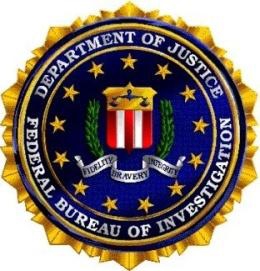|
.........
FBI and LAPD join forces to solve more than two dozen homicide cases
FBI offered to help police stymied by lack of cash
~~~~~~~~~~~~~~~~~~~~~~~~~~~~~~~~~~~~~~~~~~~~~~~~~~~~~~~~~~~~~~~~~~~~~~~~~~~~~~~~~~~~~
 |

|
|
FBI and LAPD join forces to solve more than two dozen homicide cases
With agents, cash and equipment to spare, the FBI offered to help police stymied by lack of cash to pay detectives overtime. Arrests were made in Minnesota, Arizona and Nevada.
by Joel Rubin, Los Angeles Times
September 30, 2010
For months, the budget crisis in Los Angeles has hamstrung and frustrated the city's homicide detectives. With no money to pay for the long hours of overtime they typically work, LAPD officials saw no choice but to force detectives to take time off from the job. Cases started taking longer to solve or going cold.
The LAPD's struggles weren't lost on Robert Clark, an FBI assistant special agent in charge of the bureau's anti-gang efforts in Los Angeles. Clark's concern grew as he watched the number of gang-related killings in the city's violent southern swatch spike in early summer. With agents, cash and equipment to spare, Clark approached LAPD officials with an unusual offer to help. |
| |
The results were striking: More than two dozen homicide cases were solved during a first-of-its-kind collaboration of the two agencies.
"I've been doing this for a long time and I've never seen anything like this," said veteran LAPD homicide Det. Sal LaBarbera. "We were able to clear cases at a pace that we never would have been able to hit. Twenty-seven homicides in three months? That's unheard of."
Though the FBI and LAPD have collaborated before, officials from both agencies said the speed with which the improvised idea came together, the scope of the assistance and its immediate effect were unprecedented.
Named Operation Save Our Streets, the effort began July 1 and teamed six FBI agents with a few dozen LAPD homicide detectives who work in some of the city's bloodiest, most gang-saturated neighborhoods. With the agents came half a dozen vehicles, badly needed computers and hard drives, and access to the FBI's forensic laboratory and surveillance equipment. Most importantly, Clark ponied up money to cover the LAPD detectives' overtime costs, allowing them to forgo the department-wide policy that sends officers home on forced leave when they accrue too many hours of additional work.
The money "kept us working — allowed us to stay at it unrestricted, in the way we need to. Without it, we would have been stuck keeping regular office hours," LaBarbera said.
The effect of the LAPD's overtime policy on homicide cases was first reported in The Times in April.
At the start, detectives and agents focused on 13 recent killings in which the detectives believed they had strong leads and a good chance of quick arrests. Within weeks, however, the scope of the project expanded as the agents began joining detectives when they rolled out to fresh crime scenes, as well as helping with cases going back several years. In all, the teams worked on 78 homicides, LaBarbera said.
Often forced to wait for the LAPD's overworked crime lab to process DNA evidence and conduct other forensic tests, LaBarbera said, detectives got quicker results from the FBI's lab. Advanced cellphone tracking technology was available, as were surveillance vans outfitted with equipment not owned by the LAPD.
The case of Shavonna Jones, a 30-year-old woman allegedly shot to death by her estranged husband on May 22, underscored the reach of the FBI. LAPD detectives had spent several weeks chasing dead ends throughout the region, but lost the husband's trail.
On information they gathered from prison inmates who knew the man, FBI agents were able to trace him to an area outside Minneapolis. Calls to the bureau's Minneapolis field office resulted in his arrest Aug. 12.
"Would we have solved the case? Probably, but it would have taken three or four times as long," LaBarbera said.
Arrests were also made in Nevada and Arizona. The oldest case solved went back two decades. In all, agents and detectives interviewed more than 250 witnesses and suspects, served more than two dozen search warrants and made 20 arrests, according to LAPD officials. In a few cases, the suspects whom police concluded were responsible for the killings were found to have died.
If there was a downside to the collaboration, LaBarbera said, it was that it was a stark reminder of what LAPD detectives might be able to do with more resources.
"There shouldn't be a cap or a limit when it comes to somebody's life," he said. "If it were my kid, I'd want 1,000 people out there working around the clock."
~~~~~~~~~~~~~~~~~~~~~~~~~~~~~~
EDITOR'S NOTE: Here's another article:
.
Operation Save Our Streets Joint Task Force
from LAPD
September 30, 2010
Click here for podcast
Los Angeles: Operation Save Our Streets was a great success in identifying homicide investigations and targeting violent suspects in the South Los Angeles.
The Operation Save Our Streets Joint Task Force started on July 1, 2010, and concluding on September 30, 2010. During that time, the homicide rate for South Los Angeles decreased by 17 percent and the homicide clearance rate rose by 26 percent. No doubt the arrests made by the agents and detectives saved lives from being lost by these repeat violent offenders.
The Federal Bureau of Investigation (FBI) in partnership with the Los Angeles Police Department, Criminal Gang Homicide Division (CGHD) targeted violent suspects during a three-month long operation. The task force focused on unsolved homicides as well as more recent investigations examining well over 100 cases. The investigators identified and interviewed over 250 witnesses and 24 suspects. Surveillances were conducted and information was shared between the two agencies. Twenty eight search warrants were served and over 25 felony arrests were made.
For more information, contact Detective III Sal LaBarbera, Criminal Gang and Homicide Division
http://lapdblog.typepad.com/lapd_blog/ |
|
|
|
 |

|